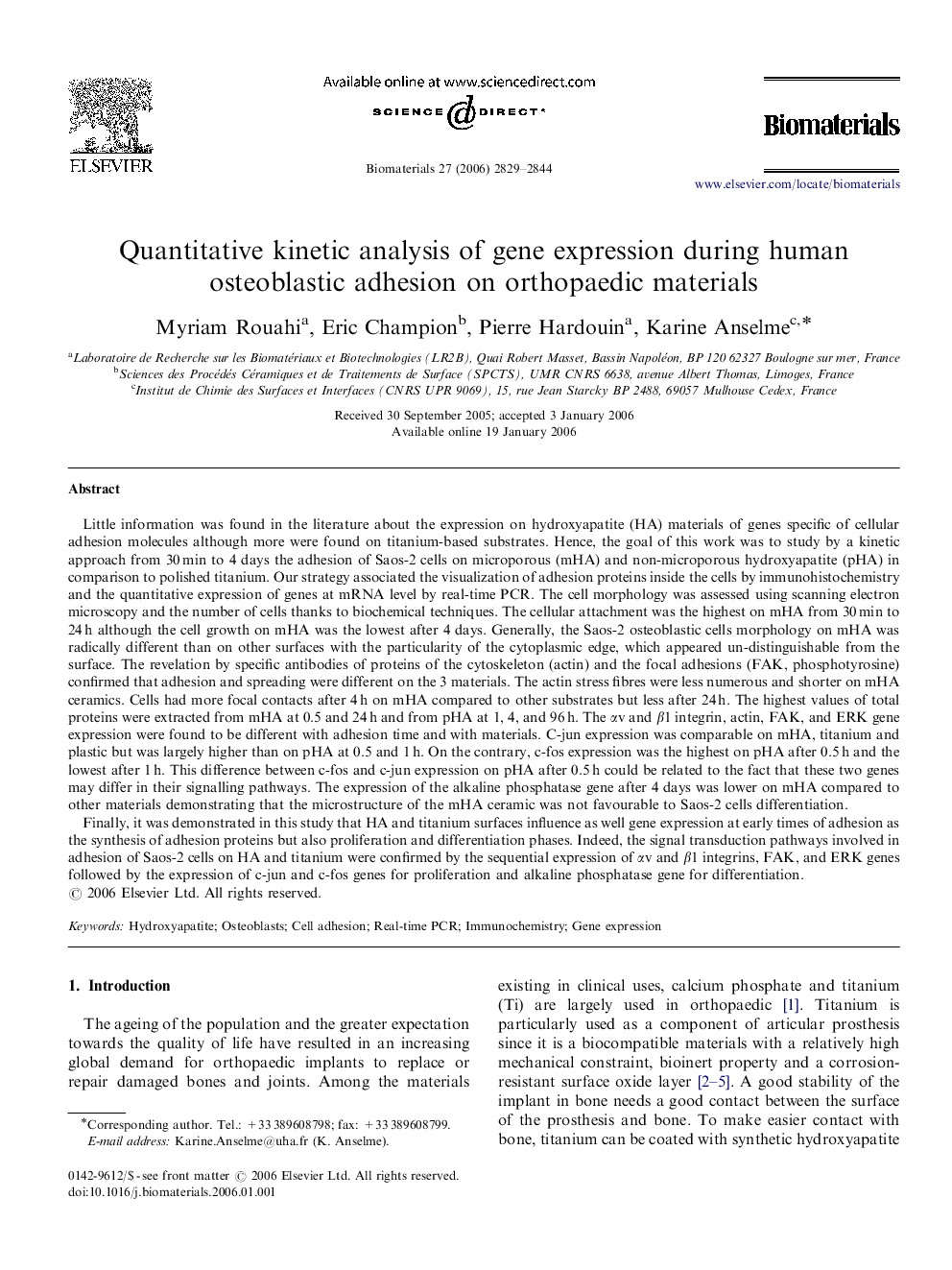| کد مقاله | کد نشریه | سال انتشار | مقاله انگلیسی | نسخه تمام متن |
|---|---|---|---|---|
| 11447 | 741 | 2006 | 16 صفحه PDF | دانلود رایگان |

Little information was found in the literature about the expression on hydroxyapatite (HA) materials of genes specific of cellular adhesion molecules although more were found on titanium-based substrates. Hence, the goal of this work was to study by a kinetic approach from 30 min to 4 days the adhesion of Saos-2 cells on microporous (mHA) and non-microporous hydroxyapatite (pHA) in comparison to polished titanium. Our strategy associated the visualization of adhesion proteins inside the cells by immunohistochemistry and the quantitative expression of genes at mRNA level by real-time PCR. The cell morphology was assessed using scanning electron microscopy and the number of cells thanks to biochemical techniques. The cellular attachment was the highest on mHA from 30 min to 24 h although the cell growth on mHA was the lowest after 4 days. Generally, the Saos-2 osteoblastic cells morphology on mHA was radically different than on other surfaces with the particularity of the cytoplasmic edge, which appeared un-distinguishable from the surface. The revelation by specific antibodies of proteins of the cytoskeleton (actin) and the focal adhesions (FAK, phosphotyrosine) confirmed that adhesion and spreading were different on the 3 materials. The actin stress fibres were less numerous and shorter on mHA ceramics. Cells had more focal contacts after 4 h on mHA compared to other substrates but less after 24 h. The highest values of total proteins were extracted from mHA at 0.5 and 24 h and from pHA at 1, 4, and 96 h. The αv and β1 integrin, actin, FAK, and ERK gene expression were found to be different with adhesion time and with materials. C-jun expression was comparable on mHA, titanium and plastic but was largely higher than on pHA at 0.5 and 1 h. On the contrary, c-fos expression was the highest on pHA after 0.5 h and the lowest after 1 h. This difference between c-fos and c-jun expression on pHA after 0.5 h could be related to the fact that these two genes may differ in their signalling pathways. The expression of the alkaline phosphatase gene after 4 days was lower on mHA compared to other materials demonstrating that the microstructure of the mHA ceramic was not favourable to Saos-2 cells differentiation.Finally, it was demonstrated in this study that HA and titanium surfaces influence as well gene expression at early times of adhesion as the synthesis of adhesion proteins but also proliferation and differentiation phases. Indeed, the signal transduction pathways involved in adhesion of Saos-2 cells on HA and titanium were confirmed by the sequential expression of αv and β1 integrins, FAK, and ERK genes followed by the expression of c-jun and c-fos genes for proliferation and alkaline phosphatase gene for differentiation.
Journal: Biomaterials - Volume 27, Issue 14, May 2006, Pages 2829–2844